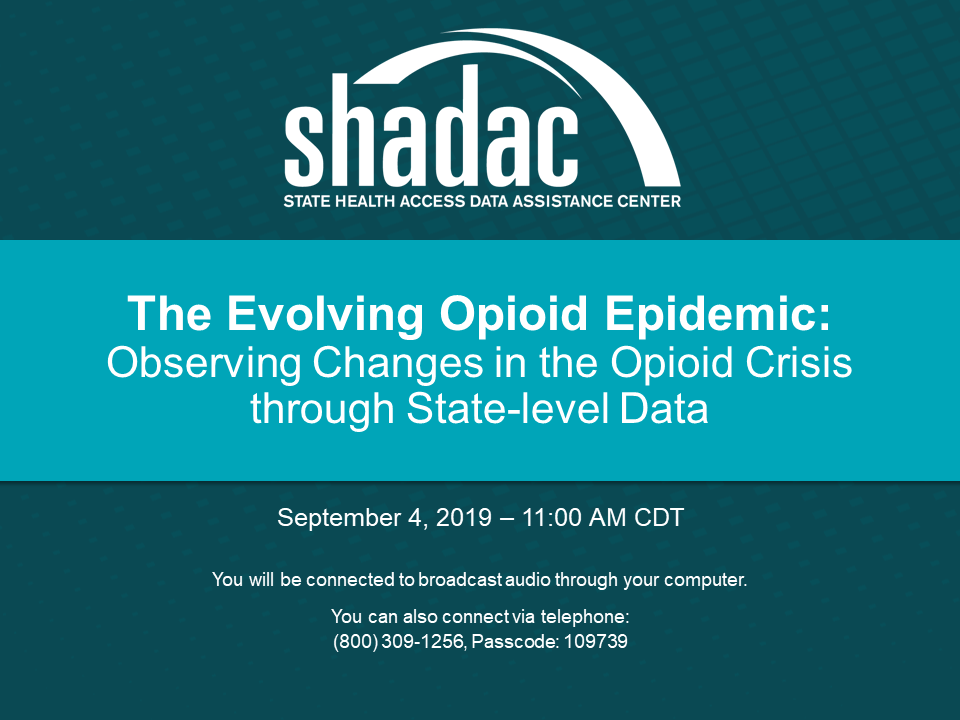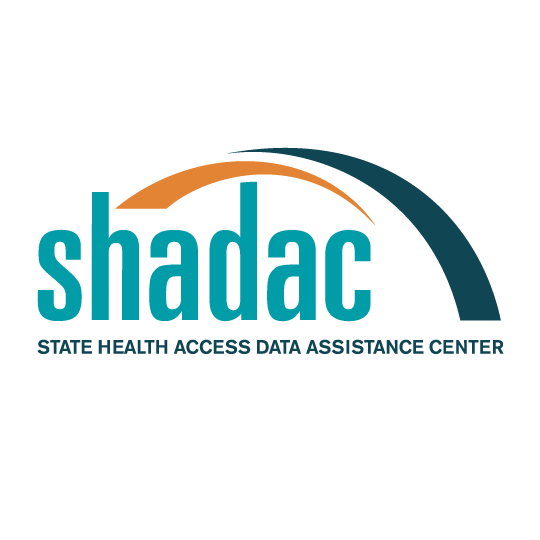Publication
The Evolving Opioid Epidemic: Observing the Changes in the Opioid Crisis through State-level Data (Webinar)
Date: September 4, 2019
Time: 11:00 a.m. - 12:00 p.m. Central / 12:00 - 1:00 p.m. Eastern
Background
During the past two decades, the national opioid crisis has proved to be persistent and dynamic. After deaths from prescription opioid painkillers grew quietly for years, the U.S. Centers for Disease Control and Prevention rang the alarm in 2011, declaring the growing problem a national “epidemic.” Despite efforts to rein in the crisis, vital statistics show that opioid overdose deaths have continued to grow year-after-year even after this declaration, reaching more than 47,000 deaths in 2017 alone.
While data has shown limited signs of progress in containing deaths from some opioids, statistics also recently illustrated how the opioid crisis has expanded beyond its early dimensions. Although the growth in death rates from prescription opioid painkillers largely plateaued after the CDC announced the epidemic, death rates from heroin soon began a rapid rise, followed closely by an even larger increase in death rates from synthetic opioids such as fentanyl. By 2017, death rates from synthetic opioids were more than double that of prescription opioid painkillers at their peak.
In July 2019, U.S. Health and Human Services Secretary Alex Azar announced that provisional overdose data from 2018 showed a five percent decline in deaths compared to the previous year, but Secretary Azar also acknowledged “other emerging threats, like concerning trends in cocaine and methamphetamine overdoses.”1 The recent significant increases in death rates from cocaine and methamphetamine, in combination with CDC research finding overdoses from those drugs frequently also involve opioids, raises concerns that the crisis may again be transforming and spreading beyond opioids to other illicit substances.
Webinar
In a recent SHADAC webinar, Senior Research Fellow Colin Planalp examined the U.S. opioid epidemic through national and state-level data on drug overdose deaths, including opioids such as prescription painkillers, heroin and synthetic opioids, and non-opioids (but related drugs) such as cocaine and psychostimulants (e.g., methamphetamine). Using data available through SHADAC’s State Health Compare, the webinar detailed changing trends in the opioid crisis and how the specifics vary across states—both in the scale of the epidemic and differences in the top substances of concern.
Mr. Planalp was joined by SHADAC Research Fellow Robert Hest, who explained how to access and use the data on opioid-related overdose deaths through SHADAC’s State Health Compare website. Mr. Hest also provided an overview of related measures available on State Health Compare, such as the U.S. Drug Enforcement Administration (DEA) data on sales of common prescription opioid painkillers.
Event Resources
Download the slides from the Webinar here. 
The Opioid Epidemic (SHADAC Resource Page)
[1] U.S. Department of Health and Human Services (HHS). (2019, July 17). Secretary Azar Statement on 2018 Provisional Drug Overdose Death Data. Retrieved from https://www.hhs.gov/about/news/2019/07/17/secretary-azar-statement-on-2018-provisional-drug-overdose-death-data.html









